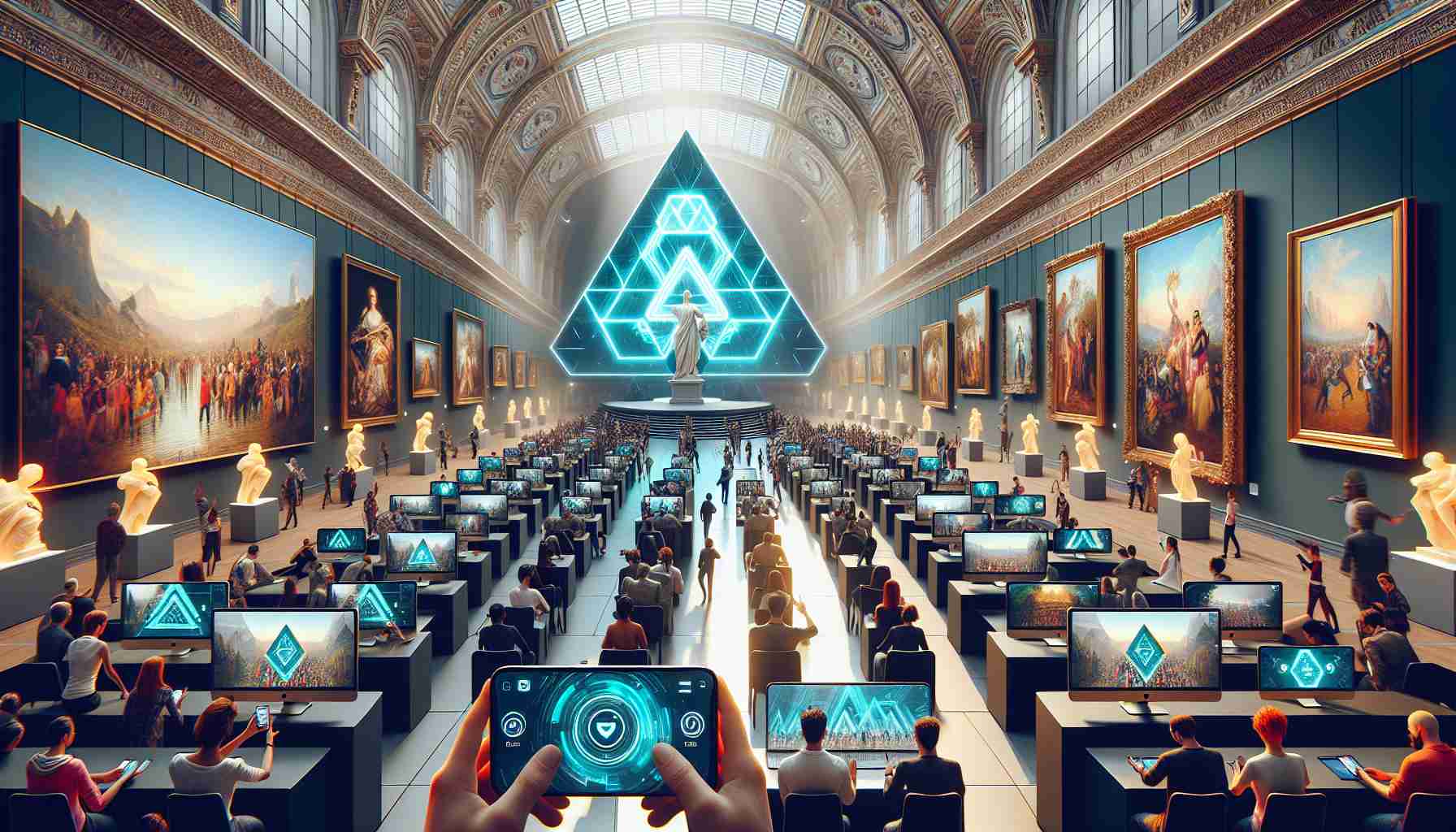A Fusion of Art and Technology: In a groundbreaking initiative to enhance art appreciation, the Städel Museum has rolled out an immersive game designed to be played on smartphones and computers. Labeled “Städel Universe,” this digital platform serves as an interactive conduit between the public and the museum’s treasured collection.
An Intriguing Call from the Future: Players are immediately drawn into the game with a narrative hook – a distress call from the future, indicating the loss of knowledge and highlighting the art at the Städel Museum as a repository of this precious wisdom. With the mission to uncover and collect this knowledge, the game stimulates player engagement from the outset.
The Cosmos as a Metaphor for Discovery: The idea behind “Städel Universe” stems from the imagination of South Korean game designer Peter Lee. The title is a nod to the infinite expanse of the night sky, drawing parallels with the limitless experiential opportunities presented by both the cosmos and the museum’s art collection. It echoes the human tradition of gleaning knowledge and guidance from the stars, while art similarly serves as a means to ponder over humanity’s existential queries.
Artistic Treasure Hunt: Consisting of 36 pieces from the Städel’s permanent collection, the game entices players with both renaissance and contemporary works. It offers an engaging and active way of interacting with art, reminiscent of traditional scavenger hunts, but with a fresh digital twist.
The Detective Work Begins: Players turn into art detectives, tasked with locating inventory numbers associated with each artwork. These can be found either physically in the exhibition space or through an in-app feature. However, roaming the museum halls in search of these codes offers a more satisfying experience, deepening the connection to the physical artworks.
Educational Yet Entertaining: The game provides a plethora of astonishing and sometimes humorous facts and questions, serving an educational purpose without sacrificing fun. Players can unravel the symbolism behind Konrad Klappheck’s representation of a typewriter or discover Rembrandt’s masterful focus on pivotal details in his paintings.
Socially Relevant Insights: Chantal Eschenfelder, a noted art educator, attests that many visuals in today’s world adhere to the dramatic principles established by art centuries ago. The game experience serves to subtly instill the skill of “reading” an image among players, from deciphering compositional nuances to understanding historical contexts.
Barrier-Free Game Development on the Horizon: While the first version of “Städel Universe” has been launched after four years of collaboration and development, initiatives are underway to make the game completely accessible, including for those with visual impairments.
Technical Information: To partake in this addictive mission of art discovery, users are required to have a smartphone with the latest iOS or Android operating systems. The game is formatted to operate on commonly used browsers and can be accessed via the museum’s complimentary Wi-Fi during a visit to the permanent exhibition.
Relevant Additional Facts:
– The Städel Museum, located in Frankfurt, Germany, is one of the oldest and most prestigious museums in the country and carries a rich history dating back to 1815.
– The museum’s collection spans over 700 years of European art, from the Middle Ages to the present, making it a significant cultural repository.
– Digital engagement in art has been expanding, with many museums worldwide leveraging technology to reach broader audiences and offer new educational tools.
– The incorporation of games into cultural experiences reflects the growing trend of gamification in various sectors—including education, marketing, and tourism.
Key Questions:
– How does “Städel Universe” maintain the educational value of the museum while appealing to a gaming audience?
– What measures are being taken to ensure that the game is accessible beyond the museum’s physical location?
– How might this digital initiative impact the museum’s footfall and overall interest in its collection?
– How are player data and digital interactions within the museum space managed to protect privacy?
Challenges/Controversies:
– Ensuring that the game appeals to a diverse audience, including those who may not be regular gamers or museum-goers.
– Balancing the entertainment value of an art game while retaining educational substance.
– Addressing accessibility issues to create an inclusive experience for all potential users.
– The potential need for regular updates and maintenance of the digital platform to keep content fresh and technologically up to date.
Advantages:
– The game could increase engagement with art among younger audiences, potentially cultivating a new generation of art enthusiasts.
– “Städel Universe” offers a novel way for visitors to explore the museum, making art appreciation more interactive and fun.
– The digital platform can reach audiences worldwide, expanding the museum’s visibility and influence beyond its geographic location.
Disadvantages:
– The game could inadvertently overshadow the physical artworks, with players more focused on the interactive experience than the art itself.
– Traditional museum-goers might feel that the historical and cultural atmosphere of the museum is diluted by the presence of modern technology.
– Maintaining the app and gaming platform may require significant ongoing resource investments.
Related links:
– Städel Museum
– Unity Real-Time Development Platform (If the game is developed using Unity, which is common for cross-platform game development).
– iOS App Store
– Google Play Store
The source of the article is from the blog portaldoriograndense.com
